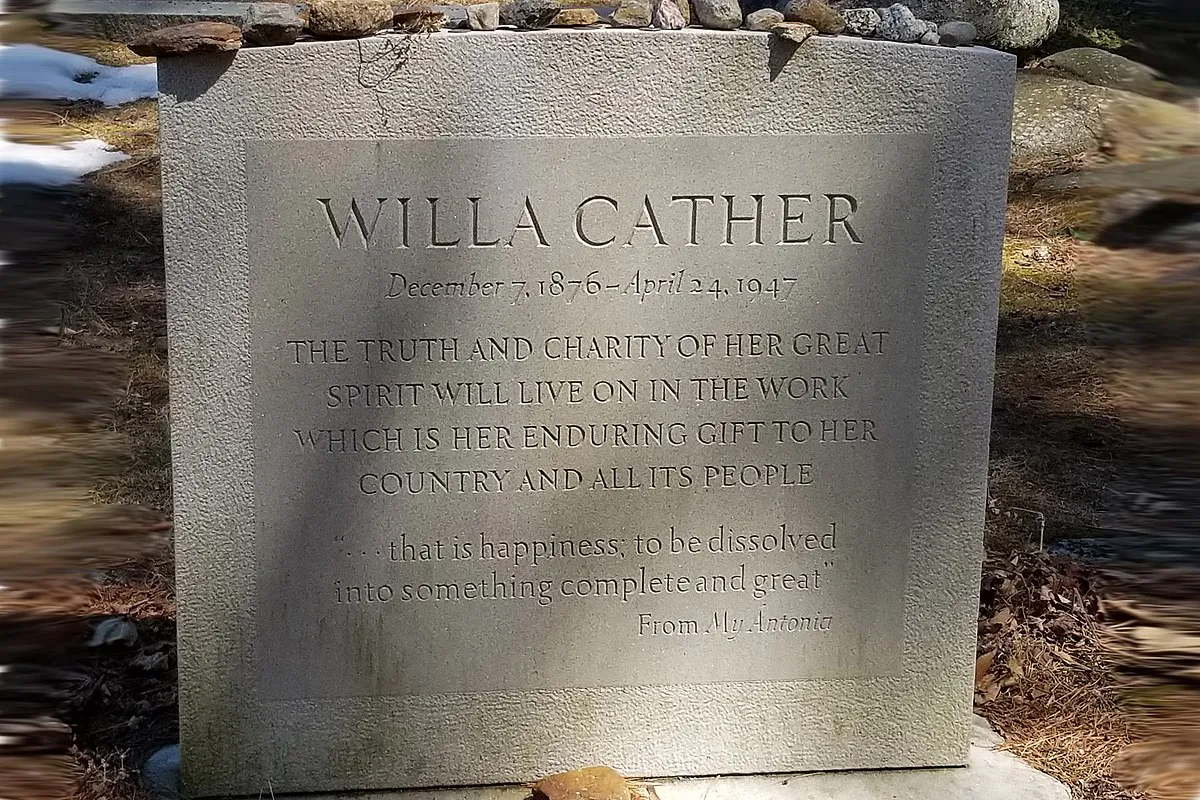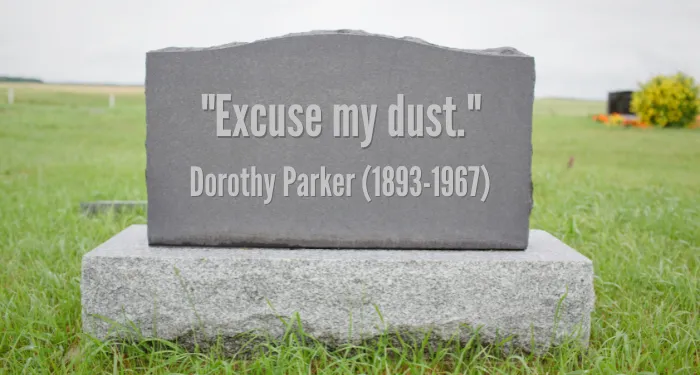
The Final Word: The Best Author Epitaphs
We all know that writing is hard work. Trying to find the perfect words to create a lasting work of art can be a maddening process. Remember how hard it was to pick your yearbook quote? It was a reflection of where you were in your life at the time, and it seemed so perfect. And now forever, under your senior picture, it will say, “A licky boom-boom down” from Snow’s Informer. Because it’s often hard to pick the right words! Now imagine they’re going on your headstone. That’s forever-forever. But many authors have chosen (or had chosen) some really great words for their final resting places. That’s why we’ve rounded up 12 of the best author epitaphs.
An epitaph is a piece of writing used on a headstone or monument to memorialize someone. (Not to be confused with epigraph, which is a quotation used to introduce a piece of writing, like at the beginning of a book.) Despite the fact that authors are literally known for using words, it’s surprising how many have headstones without an epitaph. Like, Ernest Hemingway, really? He seemed to bloviate on and on, yet his headstone contains only his name and dates. Or Douglas Adams, he has such a simple headstone, it makes you want to cry. (There isn’t even an illustration. There’s no towel, no fish, no Cosmic Cutie.) But there are plenty of amazing author epitaphs to choose from. Some are serious, some are silly, and some are poignant. And these 12 are some of the best!
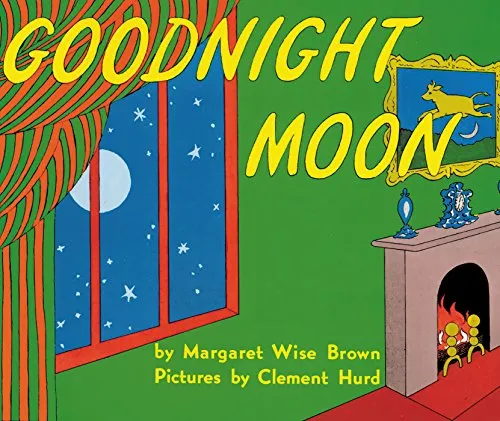
Margaret Wise Brown (1910-1952)
“Writer of songs and nonsense.” This is fitting, though sad, as Brown met her end when she was performing a high kick after surgery to show people she was feeling well. The motion dislodged a blood clot and killed her.

Octavia E. Butler (1947-2006)
Butler, the award-winning writer of groundbreaking science fiction, has a gorgeous onyx grave marker with an etched illustration. The inscription reads, “All that you touch, you change. All that you change, Changes you. The only lasting truth is Change. God is Change.” It’s from her novel Parable of the Sower.
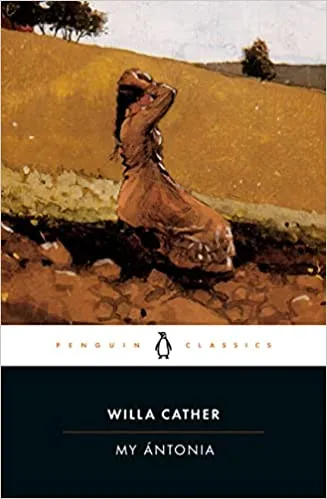
Willa Cather (1873-1947)
“That is happiness; to be dissolved into something complete and great.” This quote from Cather’s arguably most famous work, My Ántonia, is perfect and would have kept being perfect if the epitaph included the next line: “When it comes to one, it comes as naturally as sleep.”
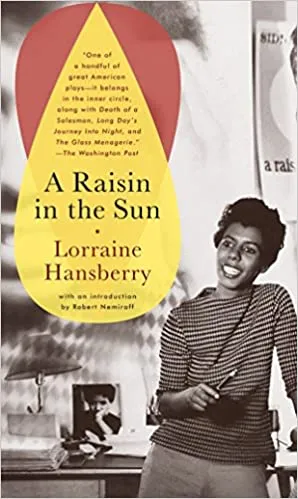
Lorraine Hansberry (1930-1965)
“I care. I care about it all. It takes too much energy not to care. The why of why we are here is an intrigue for adolescents. The how is what must command the living which is why I have lately become an insurgent again.” What a beautiful sentiment; what a tragically short life.

Langston Hughes (1901-1967)
The ashes of the Harlem Renaissance poet reside under the floor of the Schomburg Center for Research in Black Culture in Harlem. The spot is marked with a memorial featuring his poem “The Negro Speaks of Rivers,” which includes the beautiful line “My soul has grown deep like the rivers.”
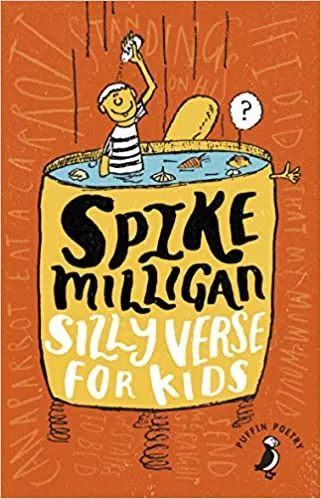
Spike Milligan (1918-2022)
“Dúirt mé leat go raibh mé breoite.” It’s Irish for “I told you I was ill.” Milligan was a writer and musician of verse much in the style of Ogden Nash and Edward Lear. And his epitaph shows he was silly to the end.
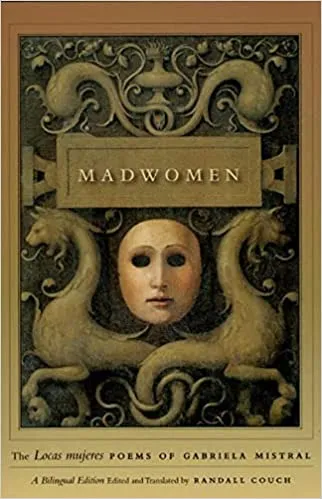
Gabriela Mistral (1889-1957)
The epitaph on the Chilen poet’s grave marker reads, “Lo que el alma hace por su cuerpo es lo que el artista hace por su pueblo.” Which translated means, “What the soul is to the body, so is the artist to his people.” Art matters, y’all.
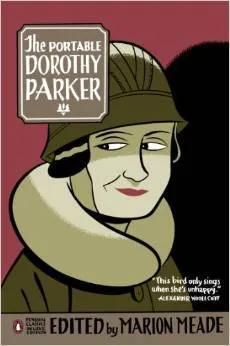
Dorothy Parker (1893-1967)
“Excuse my dust.” The acerbic Queen of the Quip wished to be cremated when she died, making her epitaph the definition of “it’s funny because it’s true.”
She has since gotten a new gravestone that reads, “Leave for her a red young rose, Go your way and save your pity, She is happy for she knows, That her dust is very pretty,” which is from her poem “Epitaph For A Darling Lady.”

Edgar Allan Poe (1809-1849)
“Quoth the Raven, Nevermore.” Some authors have lines from their most famous works on their headstones. For instance, there’s a line from The Great Gatsby on F. Scott’s Fitzgerald’s grave marker. One has to wonder if they chose it for themselves; perhaps Poe was sick and tired of people saying, “nevermore” to him. True or not, he is stuck with it…forevermore.
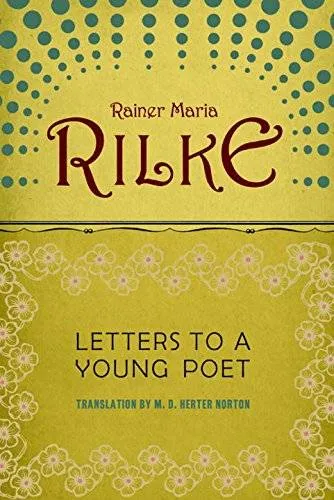
Rainer Maria Rilke (1875-1926)
“rose, o pure contradiction, desire to be no one’s sleep beneath so many lids.” Rilke wrote these words himself. They seem doubly fitting once you learn he died from an infection he got after pricking himself with a thorn while picking roses.
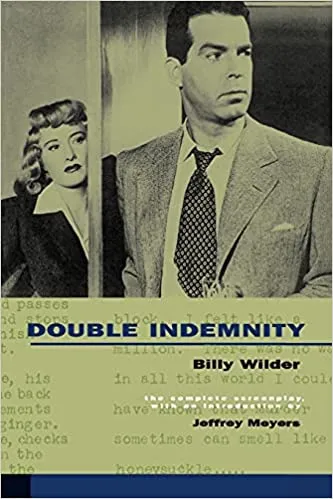
Billy Wilder (1906-2002)
“I’m a writer but then nobody’s perfect.” Wilder didn’t write novels or poetry, but he was famous for his scripts and screenplays, and an Academy Award-winning director. This epitaph is just too perfect and funny not to include.
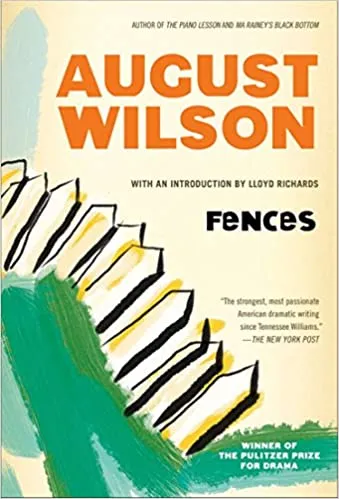
August Wilson (1945-2005)
“Wherever you are you are. I’m here.” This epitaph is both funny and heart-squeezing. Here is Wilson, now, forever. It’s simple and beautiful.
Honorary mentions: The headstone of Gwendolyn Brooks is shaped like a book, with the titles of her works on the spine. The headstone of Nella Larsen, author of Passing, is etched with a book and reads “A Novelist Remembered.” — which is nice and succinct. And Herman Melville’s headstone has a scroll carved into the front that reads…nothing. It’s blank, which really feels like a statement in itself.
As for myself, I am not sure what I want my epitaph to say. There probably won’t be any room for one, after they finish carving “Killed by a falling stack of books: we told her to be careful.” And as the headstone of Mel Blanc says, “That’s all folks.”



